An Improvement on the Upper Bounds of the Partial Derivatives of NURBS Surfaces
Abstract
1. Introduction
2. Preliminary
3. Estimation of Bounds on the Partial Derivatives of NURBS Surfaces
3.1. Bounds on the First-Order Partial Derivatives
3.2. Bounds on the Second-Order Partial Derivatives
4. Numeric Examples
5. Conclusions
Supplementary Materials
Author Contributions
Funding
Conflicts of Interest
Appendix A
Appendix B
References
- Zheng, J.; Sederberg, T.W. Estimating tessellation parameter intervals for rational curves and surfaces. ACM Trans. Graph. 2000, 19, 56–77. [Google Scholar] [CrossRef]
- Floater, M.S. Derivatives of rational Bezier curves. Comput. Aided Geom. Des. 1992, 9, 161–174. [Google Scholar] [CrossRef]
- Saito, T.; Wang, G.-J.; Sederberg, T.W. Hodographs and normals of rational curves and surfaces. Comput. Aided Geom. Des. 1995, 12, 417–430. [Google Scholar] [CrossRef][Green Version]
- Wang, G.-J.; Sederberg, T.W.; Saito, T. Partial derivatives of rational Bezier surfaces. Comput. Aided Geom. Des. 1997, 14, 377–381. [Google Scholar] [CrossRef]
- Thomas, H. On the derivatives of second and third degree rational Bézier curves. Comput. Aided Geom. Design 1999, 16, 157–163. [Google Scholar] [CrossRef]
- Xie, B.-H.; Wang, G.-J. Approximating the derivative bounds of parametric curves and applying to curve rasterization. J. Softw. 2003, 14, 2106–2112. [Google Scholar]
- Wu, Z.K.; Lin, F.; Soon, S.H.; Yun, C.K. Evaluation of difference bounds for computing rational Bezier curves and surfaces. Comput. Graph.-UK 2004, 28, 551–558. [Google Scholar] [CrossRef]
- Zhang, R.-J.; Ma, W. Some improvements on the derivative bounds of rational Bezier curves and surfaces. Comput. Aided Geom. Des. 2006, 23, 563–572. [Google Scholar] [CrossRef]
- Xu, H.; Wang, G. Hodograph computation and bound estimation for rational B-spline curves. Prog. Nat. Sci. 2007, 17, 988–992. [Google Scholar]
- Bez, H.E.; Bez, N. On derivative bounds for the rational quadratic Bezier paths. Comput. Aided Geom. Des. 2013, 30, 254–261. [Google Scholar] [CrossRef]
- Bez, H.E.; Bez, N. New minimal bounds for the derivatives of rational Bezier paths and rational rectangular Bezier surfaces. Appl. Math. Comput. 2013, 225, 475–479. [Google Scholar] [CrossRef][Green Version]
- Deng, C.; Li, Y. A new bound on the magnitude of the derivative of rational Bézier curve. Comput. Aided Geom. Des. 2013, 30, 175–180. [Google Scholar] [CrossRef]
- Li, Y.; Deng, C.; Jin, W.; Zhao, N. On the bounds of the derivative of rational Bezier curves. Appl. Math. Comput. 2013, 219, 10425–10433. [Google Scholar] [CrossRef]
- Zhang, R.-J. Improved derivative bounds of the rational quadratic Bezier curves. Appl. Math. Comput. 2015, 250, 492–496. [Google Scholar] [CrossRef]
- Jin, W.; Deng, C.; Li, Y.; Liu, J. Derivative bound estimations on rational conic Bezier curves. Appl. Math. Comput. 2014, 248, 113–117. [Google Scholar] [CrossRef]
- Zhang, R.-J.; Jiang, L. A conjecture on the derivative bounds of rational Bézier curves. Int. J. Model. Simul. 2016, 36, 20–27. [Google Scholar] [CrossRef]
- Zheng, J.M. Minimizing the maximal ratio of weights of a rational Bézier curve. Comput. Aided Geom. Des. 2005, 22, 275–280. [Google Scholar] [CrossRef]
- Cai, H.-J.; Wang, G.-J. Minimizing the maximal ratio of weights of rational Bézier curves and surfaces. Comput. Aided Geom. Des. 2010, 27, 746–755. [Google Scholar] [CrossRef]
- Huang, Y.; Su, H. The bound on derivatives of rational Bezier curves. Comput. Aided Geom. Des. 2006, 23, 698–702. [Google Scholar] [CrossRef]
- Cao, J.; Chen, W.; Wang, G.Z. Bound Estimations on Lower Derivatives of Rational Triangular Bézier Surfaces. J. Softw. 2007, 18, 2326–2335. [Google Scholar] [CrossRef][Green Version]
- Hu, Q.-Q.; Wang, G.-J. Improved bounds on partial derivatives of rational triangular Bezier surfaces. Comput. Aided Des. 2007, 39, 1113–1119. [Google Scholar] [CrossRef]
- Liu, Y.; Zeng, X.; Cao, J. An improvement on the upper bounds of the magnitudes of derivatives of rational triangular Bezier surfaces. Comput. Aided Geom. Des. 2014, 31, 265–276. [Google Scholar] [CrossRef]
- Wang, G.-J.; Tai, C.-L. On the convergence of hybrid polynomial approximation to higher derivatives of rational curves. J. Comput. Appl. Math. 2008, 214, 163–174. [Google Scholar] [CrossRef]
- Selimovic, I. New bounds on the magnitude of the derivative of rational Bezier curves and surfaces. Comput. Aided Geom. Des. 2005, 22, 321–326. [Google Scholar] [CrossRef]
- Wang, G.-J.; Xu, H.-X.; Hu, Q.-Q. Bounds on partial derivatives of NURBS surfaces. Appl. Math.-A J. Chin. Univ. 2017, 32, 281–293. [Google Scholar] [CrossRef]
- Filip, D.; Magedson, R.; Markot, R. Surface algorithms using bounds on derivatives. Comput. Aided Geom. Des. 1986, 3, 295–311. [Google Scholar] [CrossRef]
- Prochazkova, J. Derivative of B-Spline function. In Proceedings of the 25th Conference on Geometry and Computer Graphics, Prague, Czech Republic, 12–16 September 2005. [Google Scholar]
- Piegl, L.; Tiller, W. The NURBS Book; Springer: Berlin/Heidelberg, Germany, 2012. [Google Scholar]
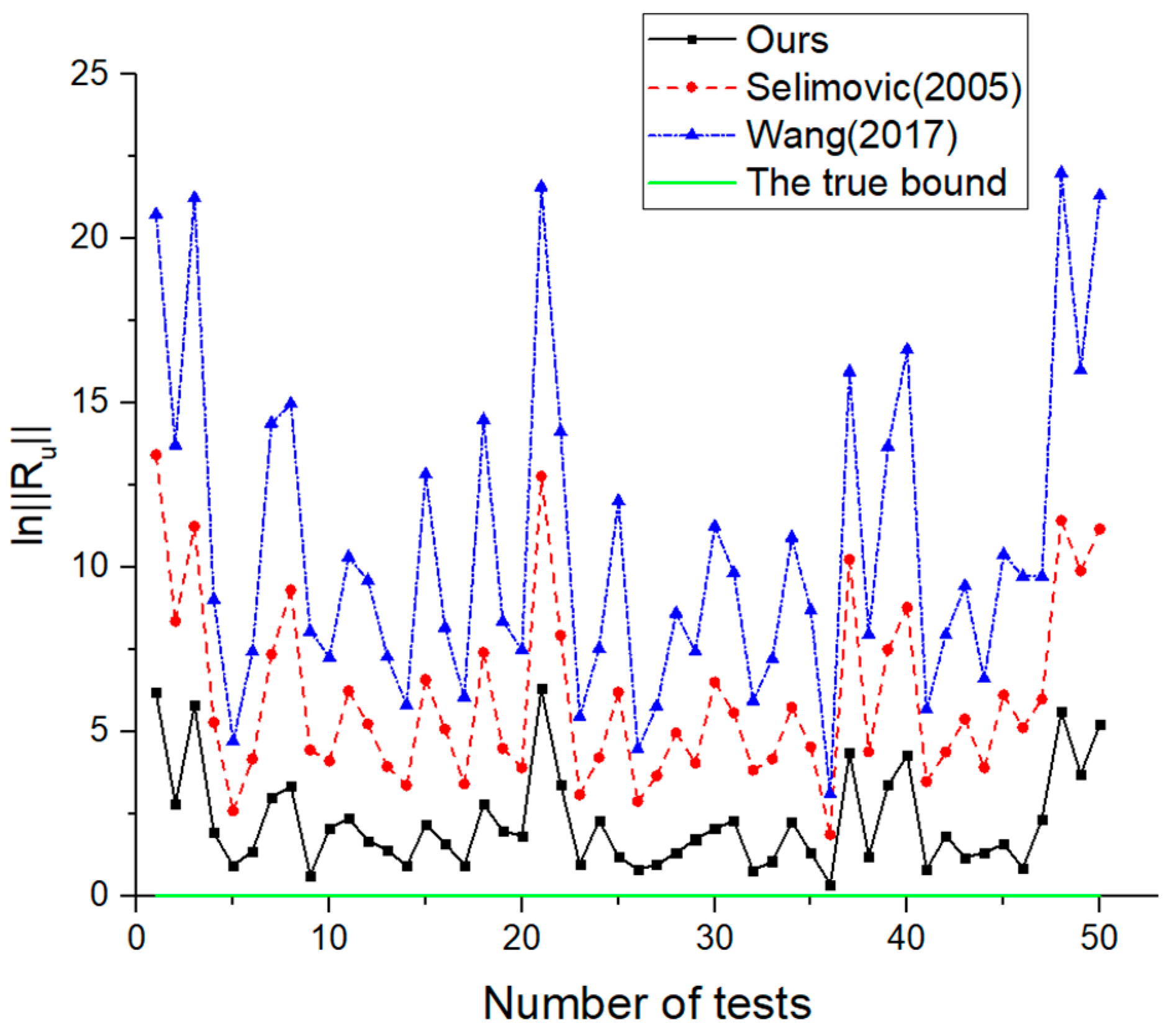
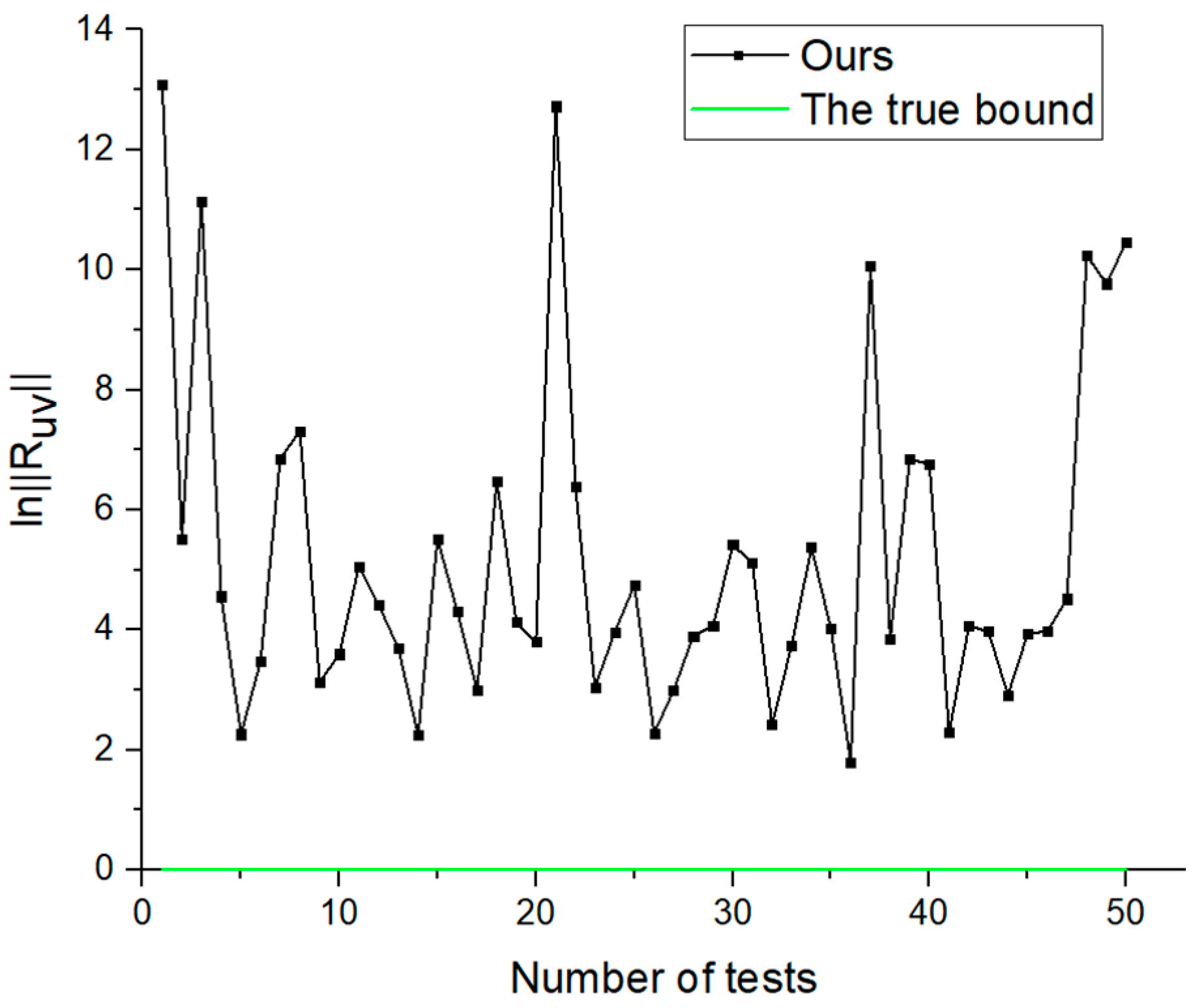
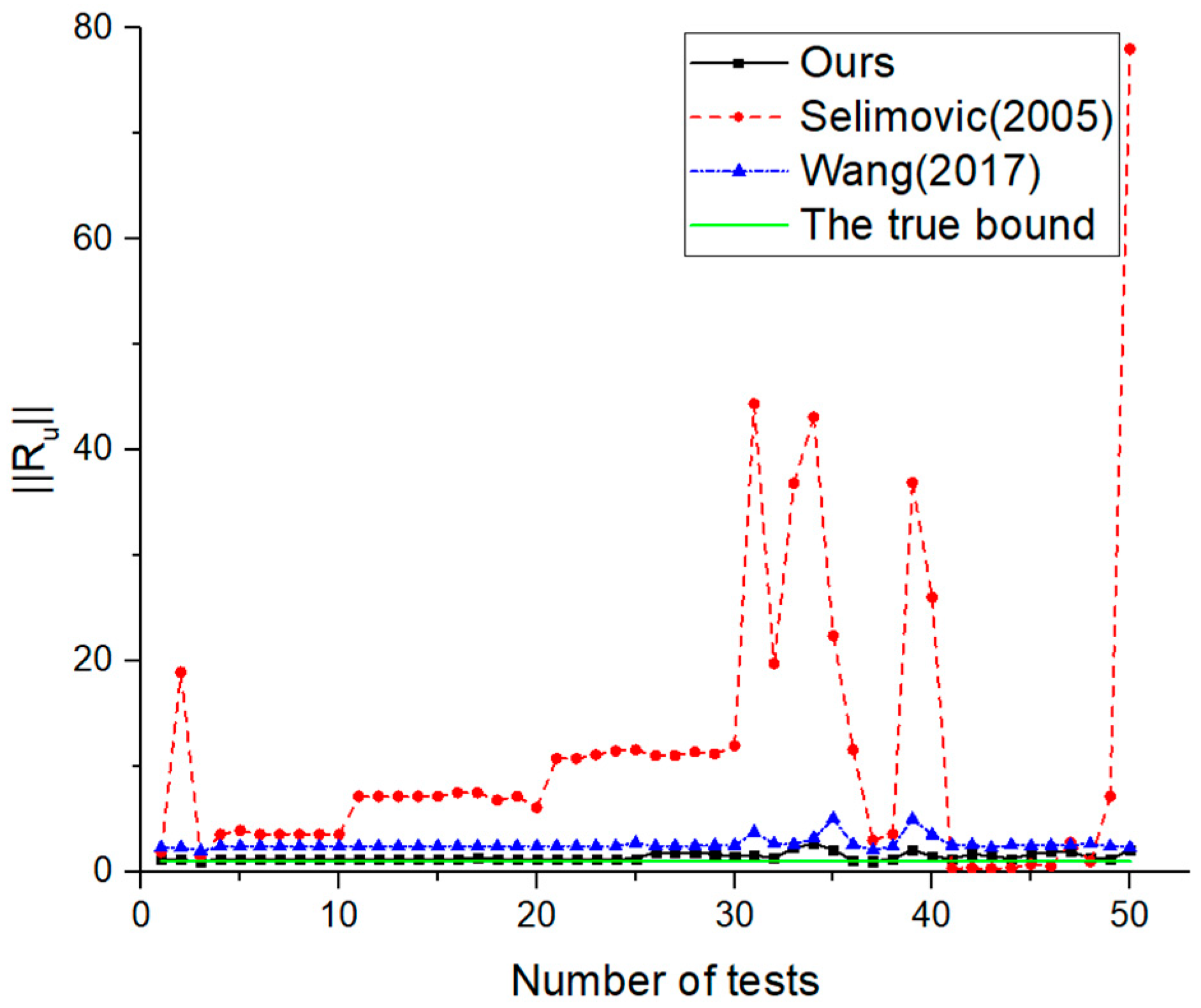
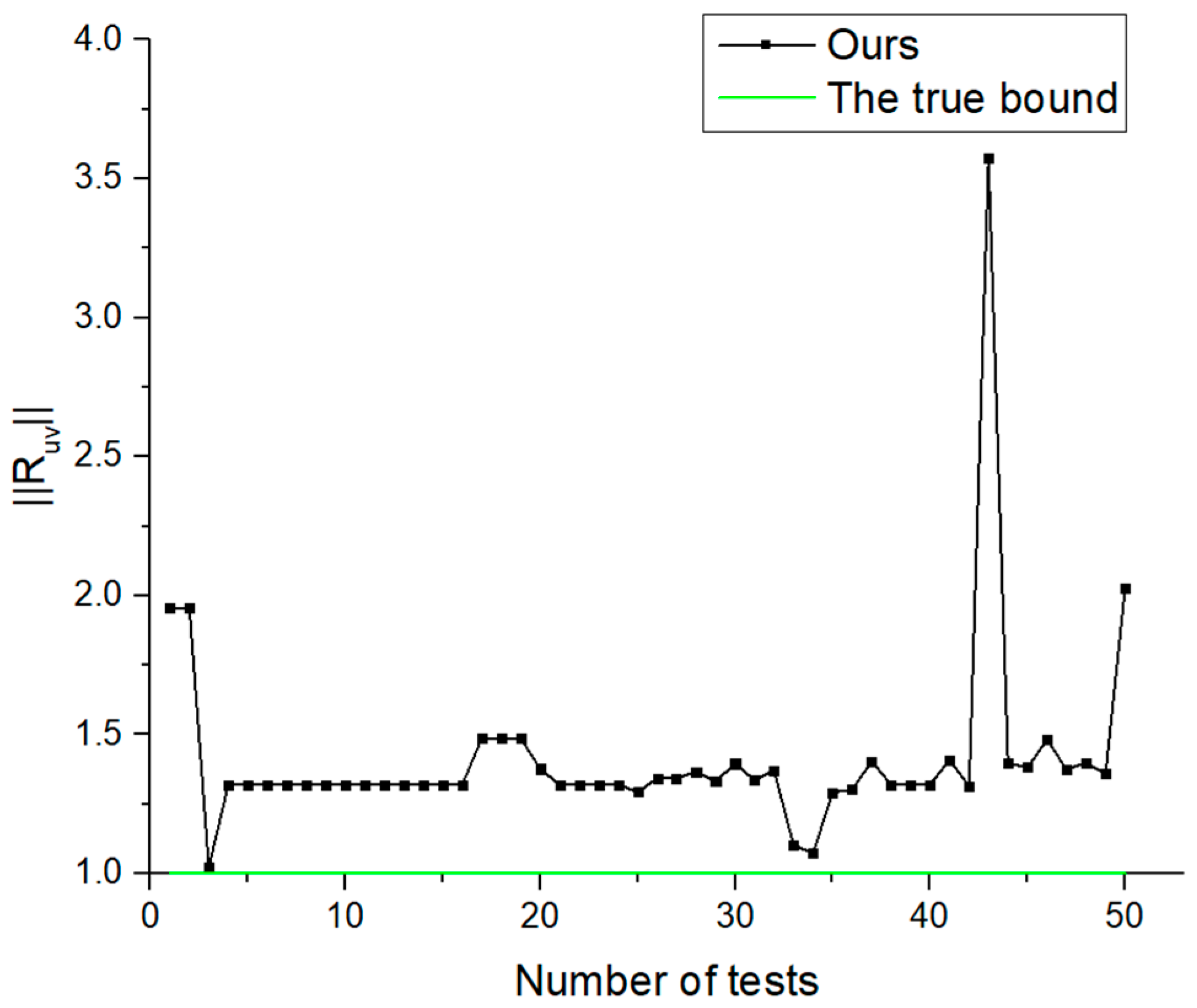


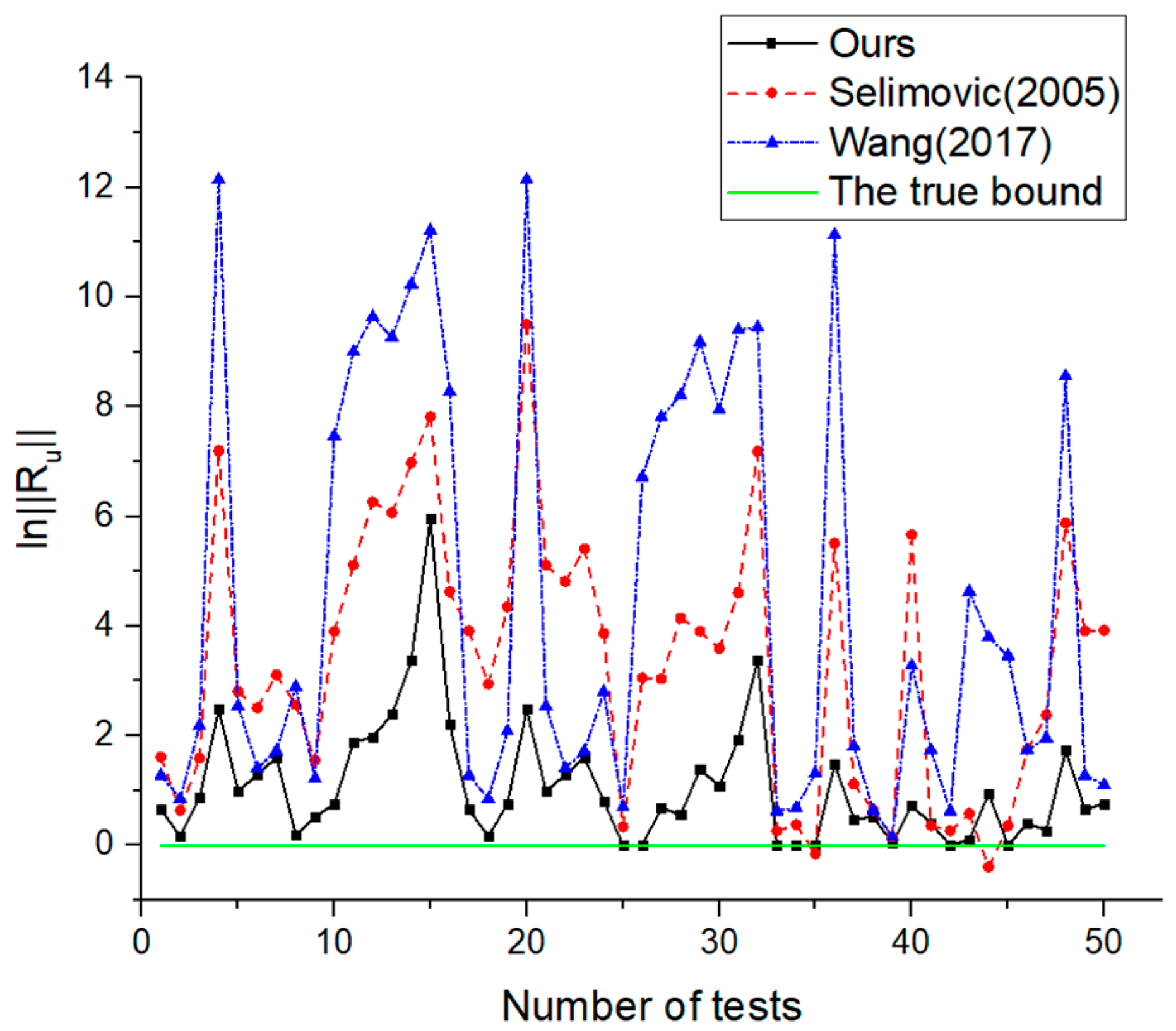
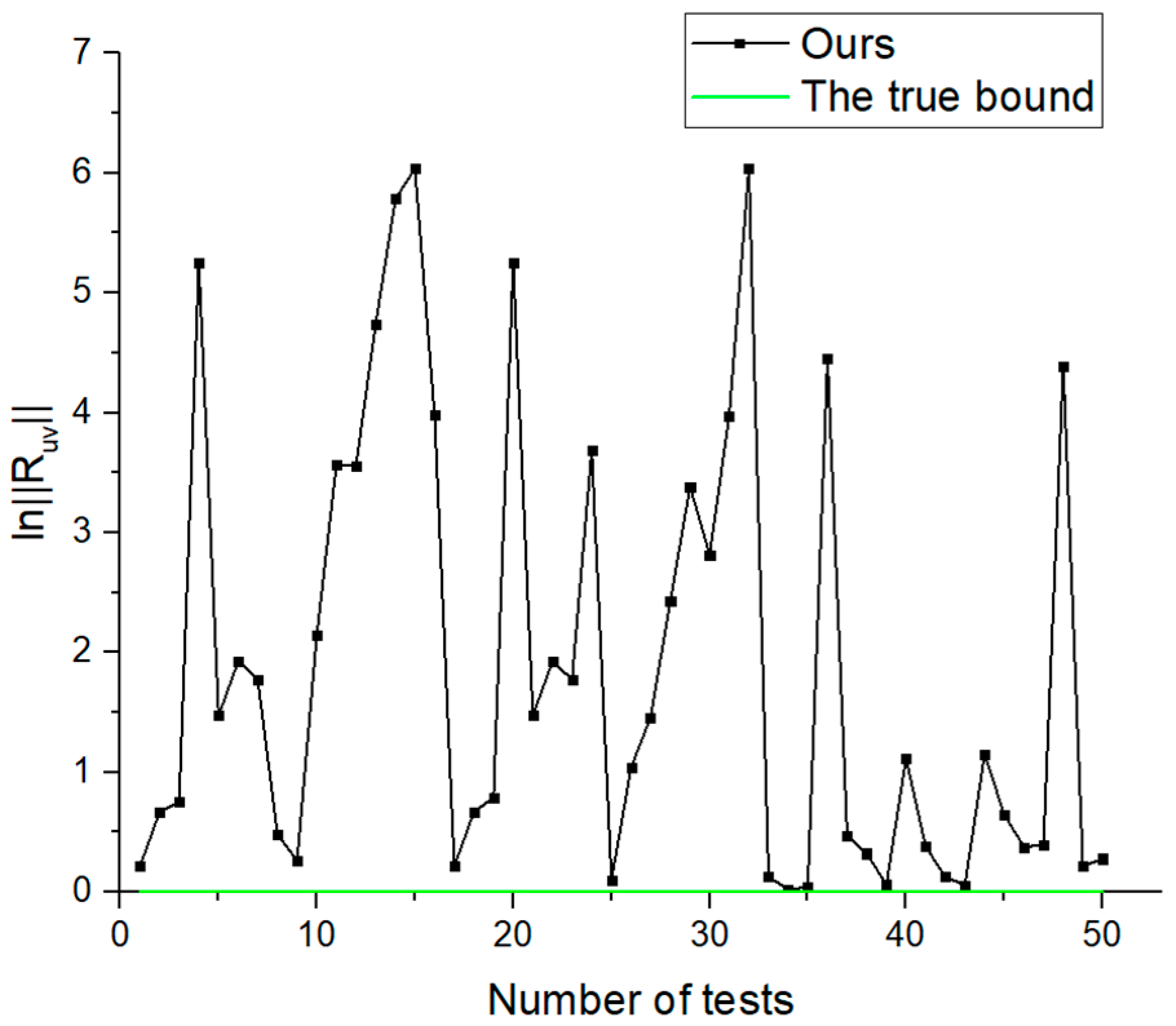
© 2020 by the authors. Licensee MDPI, Basel, Switzerland. This article is an open access article distributed under the terms and conditions of the Creative Commons Attribution (CC BY) license (http://creativecommons.org/licenses/by/4.0/).
Share and Cite
Tian, Y.; Ning, T.; Li, J.; Zheng, J.; Chen, Z. An Improvement on the Upper Bounds of the Partial Derivatives of NURBS Surfaces. Mathematics 2020, 8, 1382. https://doi.org/10.3390/math8081382
Tian Y, Ning T, Li J, Zheng J, Chen Z. An Improvement on the Upper Bounds of the Partial Derivatives of NURBS Surfaces. Mathematics. 2020; 8(8):1382. https://doi.org/10.3390/math8081382
Chicago/Turabian StyleTian, Ye, Tao Ning, Jixing Li, Jianmin Zheng, and Zhitong Chen. 2020. "An Improvement on the Upper Bounds of the Partial Derivatives of NURBS Surfaces" Mathematics 8, no. 8: 1382. https://doi.org/10.3390/math8081382
APA StyleTian, Y., Ning, T., Li, J., Zheng, J., & Chen, Z. (2020). An Improvement on the Upper Bounds of the Partial Derivatives of NURBS Surfaces. Mathematics, 8(8), 1382. https://doi.org/10.3390/math8081382




